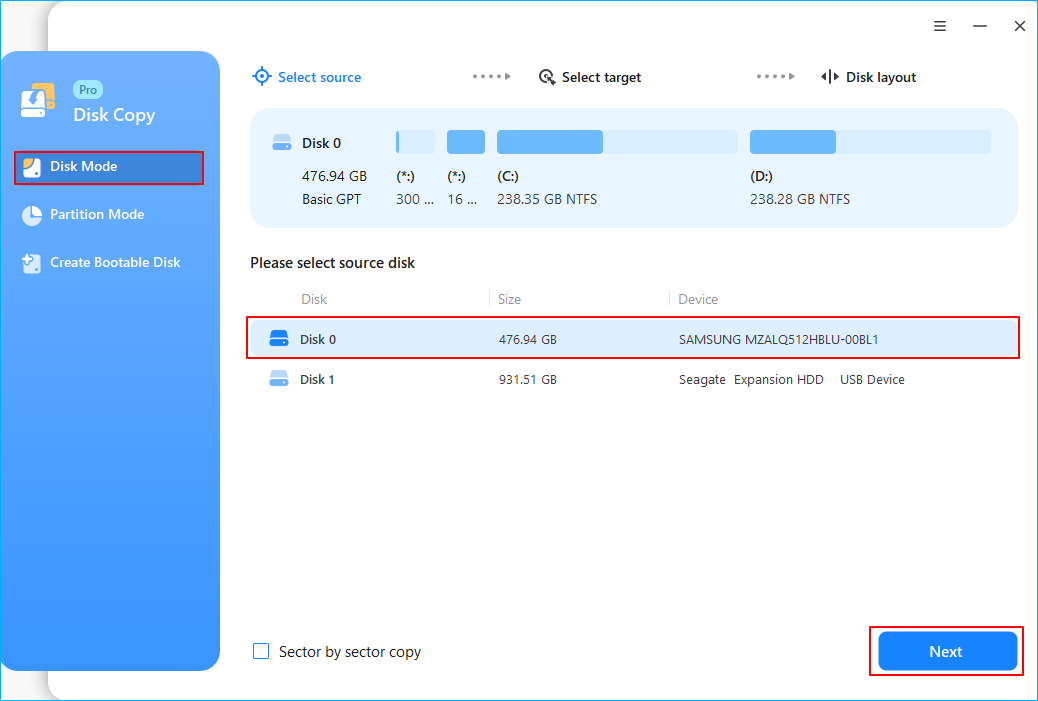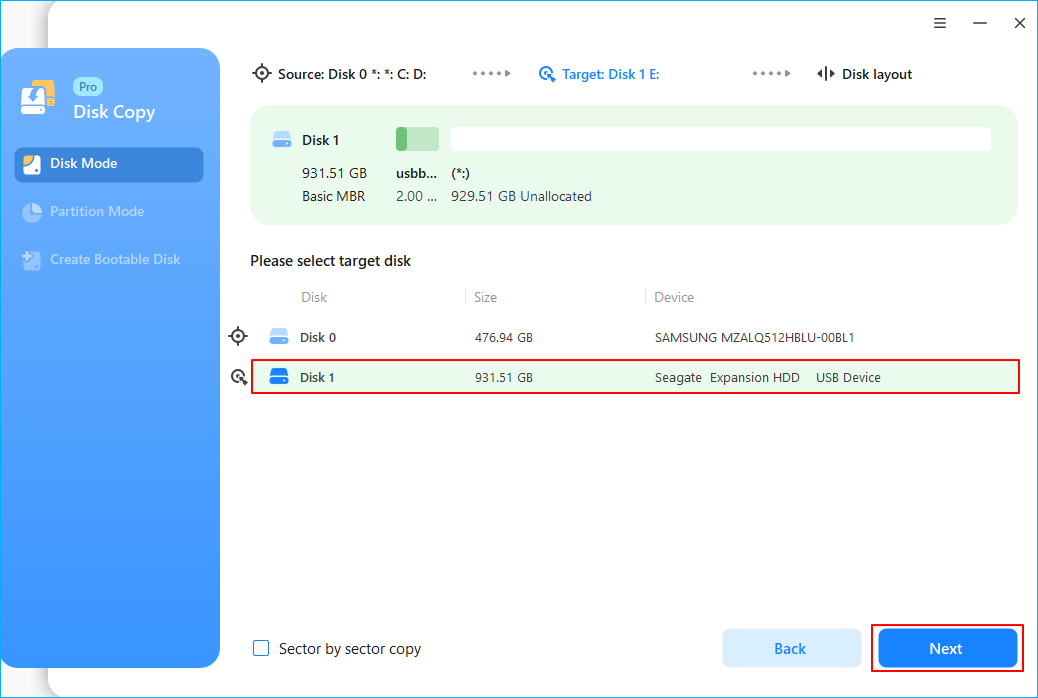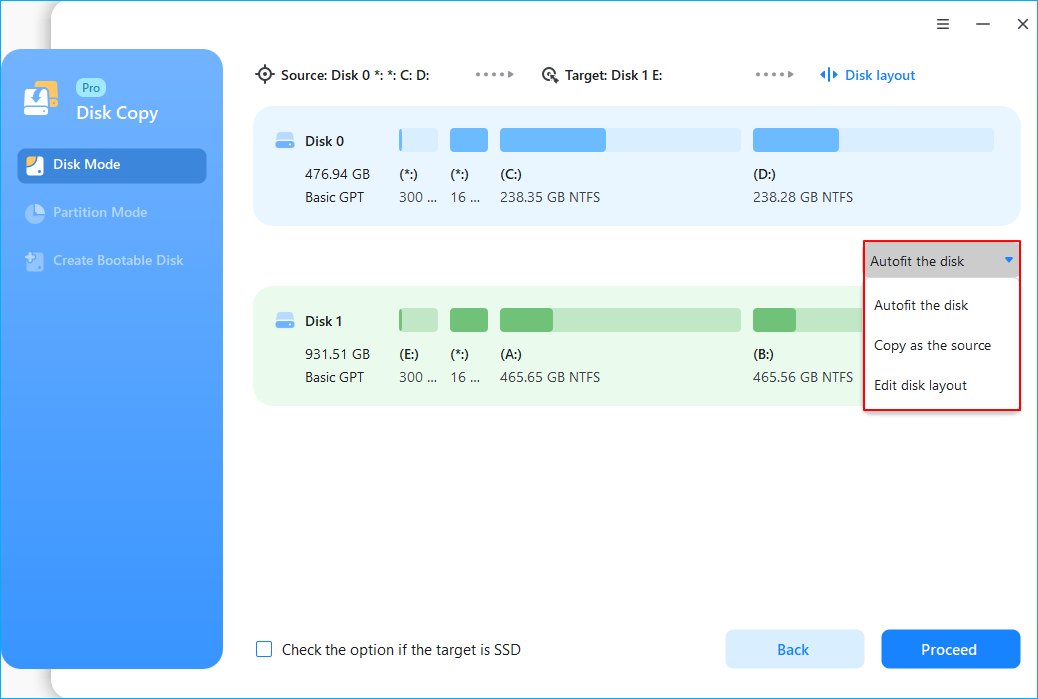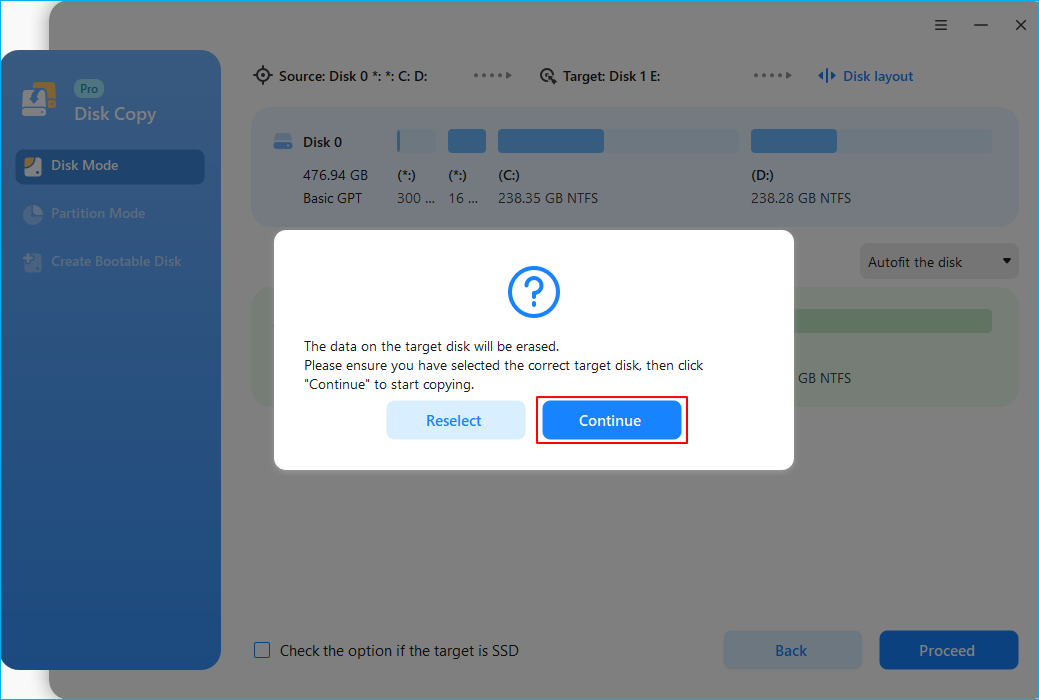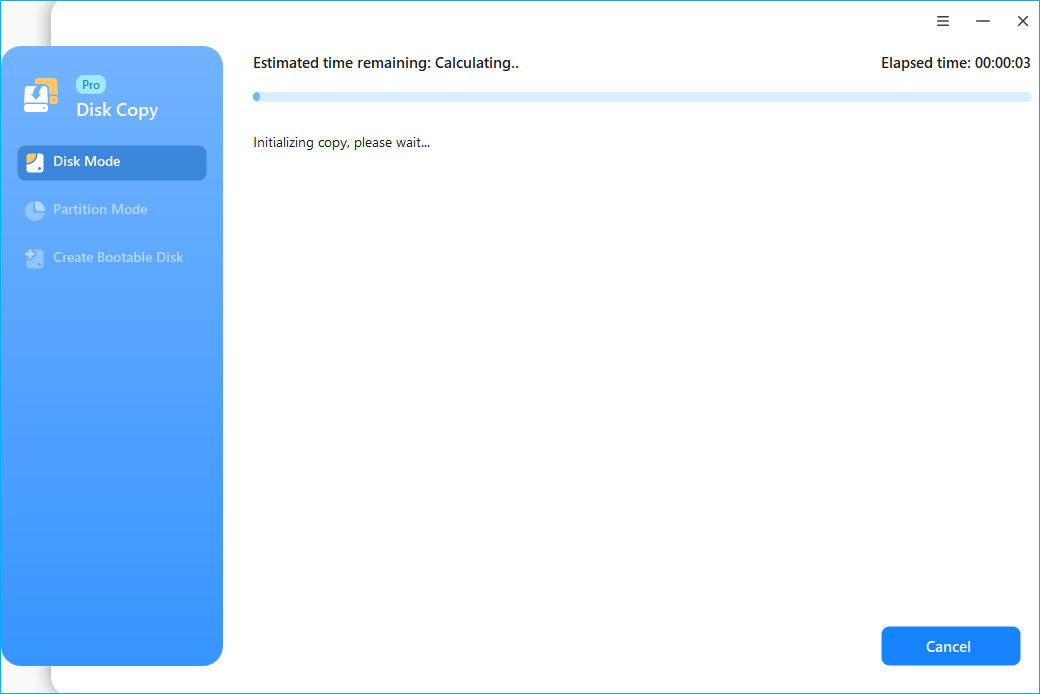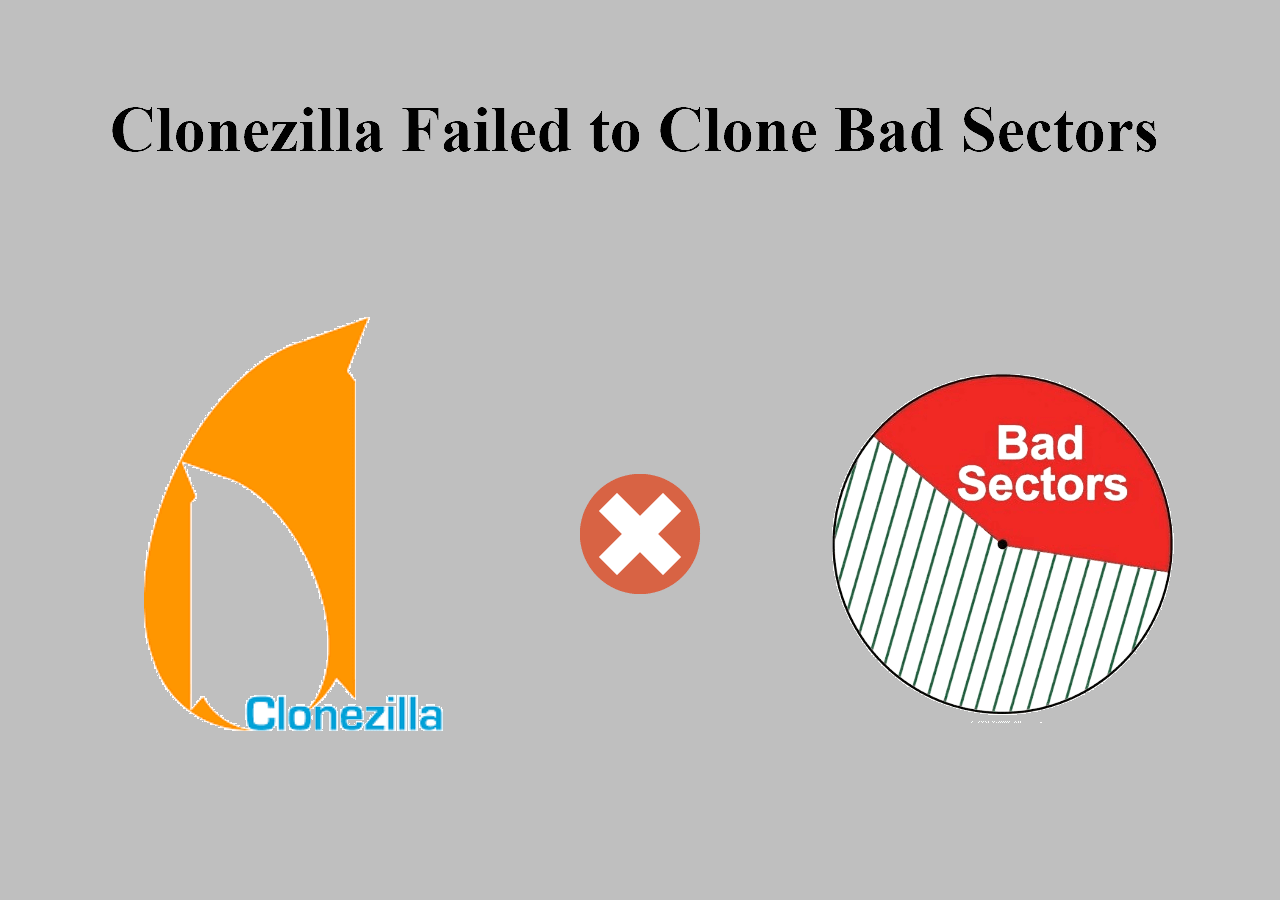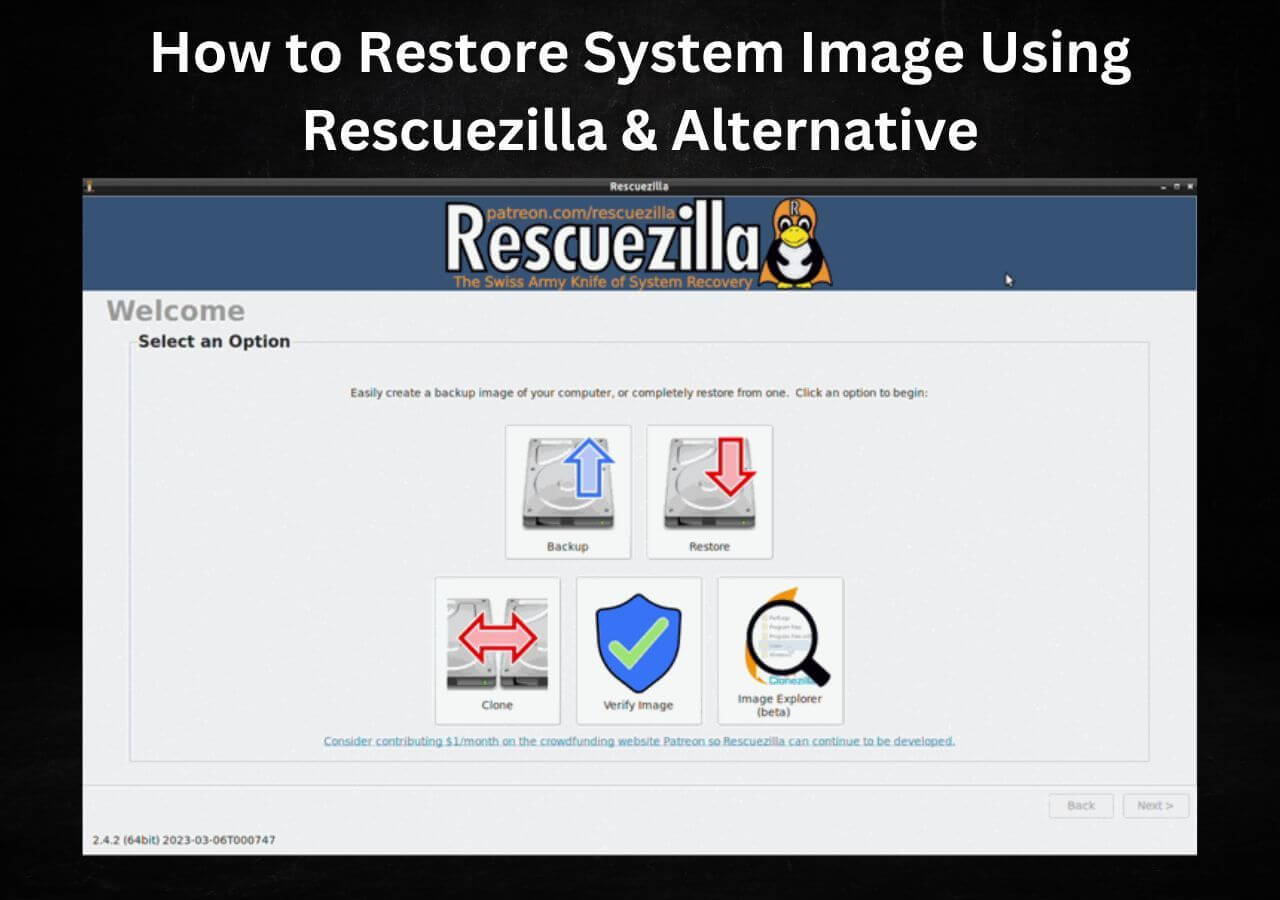Page Table of Contents
Why do more and more users want to move their C drive to an SSD? SSDs have advantages as a boot drive over HDD, while most computers are usually pre-installed with HDDs. Many users would also like to keep an HDD as a storage device as it has no read/write restrictions and more storage space for the same price.
Is there a way to safely move my boot SSD to another SSD?
byu/Optimistic_Avacado inpchelp
To this end, you must migrate C drive to new SSD whether you want to replace the hard drive altogether with SSD or use SSD for OS and HDD for storage. This article will describe how to transfer C drive to new SSD. Let's move on!
How to Move C Drive to New SSD Without Reinstalling
- Cloning is best for transferring all the data from the C drive to the new SSD without reinstalling Windows or losing data and is suitable for all users (beginners to pros) and large-scale data migrations.
Quick Steps:
- 1️⃣Step 1. Download and install EaseUS Disk Copy.
- 2️⃣Step 2. Connect SSD to your PC via USB-to-SATA cable and launch the software.
- 3️⃣Step 3. Select the old drive as the source disk and the SSD as the target disk.
- 4️⃣Step 4. Click Proceed to clone C drive to SSD.
- 5️⃣Step 5. Install your SSD after cloning.
- 6️⃣Step 6. Reboot from your new drive.
The easiest way to migrate C drive to a new SSD is to clone the C drive to the SSD. However, since Windows has no built-in cloning tool, you must turn to professional cloning software for help. Under such circumstances, EaseUS Disk Copy, a professional disk clone utility, can help you.
EaseUS Disk Copy is a multi-functional cloning utility for Windows 11/10/8/7. It can help you to clone a system, disk, partition, etc. For example, it can help you transfer data from one SSD to another. In addition, it enables you to upgrade to larger hard disks without reinstalling Windows.
Cloning can help you clone OS to a new drive easily and quickly without losing any data or reinstalling Windows. Free download this disk cloning software to transfer all data, including the operating system and installed programs, from one drive C to another.
Video Guide on How to Clone Drive C to SSD using EaseUS Disk Copy:
- 00:20 Introduction
- 00:26 What to Do Before Transferring C Drive
- 01:31 How to Transfer C Drive to Another SSD
- 02:57 Ending

Step-by-step Guide on Cloning C Drive to New SSD Using EaseUS Disk Copy:
Prior Notice:
- The "Sector by sector copy" asks the size of your destination disk to be at least equal to or larger than that of the source disk. Leave this feature unchecked if you wish to clone a larger hard disk to a smaller hard disk.
- All data on the destination disk will be completely erased, so take care.
Step 1. To start copying/cloning an entire disk to another, choose this disk as the source disk under "Disk Mode" and click "Next".
Step 2. Choose the other disk as the destination disk.
Step 3. Check the disk layout of the two disks. You can manage the disk layout of the destination disk by selecting "Autofit the disk", "Copy as the source" or "Edit disk layout".
- "Autofit the disk" makes some changes by default on the destination disk layout so that it can work at its best status.
- "Copy as the source"does not change anything on destination disk and the layout is the same as source disk.
- "Edit disk layout" allows you to manually resize/move partition layout on this destination disk.
Tick the "Check the option if the target is SSD" option to put your SSD in its best performance.
A message now appears, warning you that data will be lost. Please confirm this message by clicking "OK" and then click "Next".
Step 4. Click "Proceed" to officially execute the task.
You can directly install your SSD alongside the old disk if you have a desktop PC with more than one disk slot. If your PC has only one disk slot, remove the old drive and replace it with the SSD. Here is an article about how to replace an old disk with a new one:
After replacing the hard drives, reboot from your new drive in BIOS/UEFI setup. As the computer boots, you can press a specific key, like F1, F2, F12, Del, or Esc. From there, find the boot options in the BIOS menu and set the new SSD as your boot drive. (The BIOS key will differ depending on your PC's manufacturer.)
Troubleshooting Tips:
Share this post on your social media to help others clone C drive to new SSD drives!
How to Copy C Drive to New SSD via Windows Backup & Restore
- Backup and Restore can transfer your system to another disk but requires reinstalling drivers and apps, which is unsuitable for beginners.
Quick Steps:
- 1️⃣Part 1. Shrink the C drive in Disk Management to fit on a smaller SSD (Optional).
- 2️⃣Part 2. Create a system image and save it to the target SSD.
- 3️⃣Part 3. Install the SSD and restore from the backup image.
- 4️⃣Part 4. Reclaim unallocated disk space if necessary.
- 5️⃣Part 5. Measures the performance of disk drives.
Try this solution if you want to operate everything manually. If you would rather perform it manually, this solution is good. The second option is manually migrating the system drive to an SSD using Windows built-in tools. The detailed steps are as follows:
Part 1. Shrink the C drive(Optional).
Since the HDD is typically much larger than the SSD, shrink the C drive to fit on the smaller SSD. Right-click on Computer > Manage > Disk Management, right-click on the C drive, and then select Shrink Volume. Enter a number that is at least 10% smaller than the usable capacity of your SSD in the field labeled "Enter the amount of space to shrink in MB."

Part 2. Create a system image and save it to the target SSD.
- Step 1. Type and search for Control Panel in the Windows search bar and click Open.
- Step 2. Select Backup & Restore (Windows 7) in the System and Security section.
- Step 3. Select Create a system image. Choose the SSD to save the system image and click Next in the On a hard disk section.
- Step 4. The system lists the drives to be backed up and the required disk space. Click Start Backup to start creating a system image.
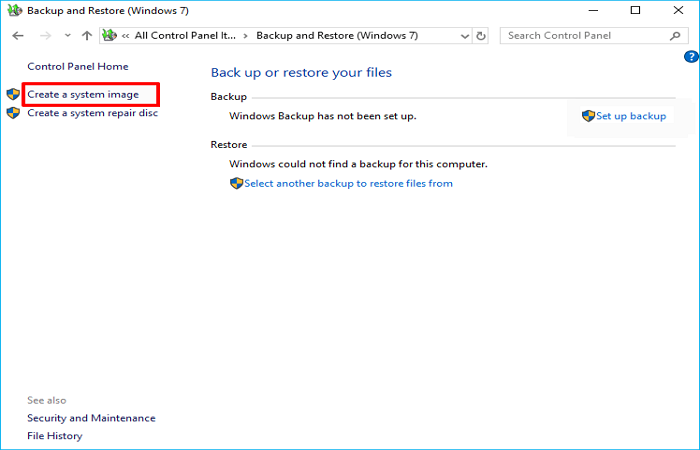
When you save the backup, it generates a WindowsImageBackup folder on the drive where the system image is located. If you want to keep the old system image, copy the entire WindowsImageBackup folder to a new location and create a new system image.
Part 3. Install the SSD and restore from the backup image.
- Shut down the system, install your SSD, or restart and boot from the recovery drive or Windows bootable media. When your PC reboots, the Windows logo will appear.
- Enter your language and preferences > Repair your computer > Troubleshoot > System Image Recovery (Ensure your SSD with the system image saved is connected and turned on.) > System Image will select the latest system image.
- If you want to restore another image, check the Select a system image box, click Next, and follow the on-screen instructions to select an available system image.
- System Image will format and re-partition your hard drive. If you have partitions or other attached storage you would like to exclude, click the Exclude disks, then click Next.
- Wait for the restoration process to be done.

- Tips to boot from a USB drive:
- Connect the bootable USB or recovery USB to your computer and press and hold the F1/F2/F10/Del/Esc key to enter the BIOS > Locate the boot options and set the USB as the first boot choice > Reboot your PC.
Part 4. Reclaim unallocated disk space if necessary.
Plug back all drives except the original OS drive to ensure no problems when the computer restarts. Next, right-click the new OS partition in Disk Management after starting your computer. Finally, select "Extend Volume" to fill the SSD. It would be best if you didn't change the default value because Windows calculates it automatically.

Part 5. Measures the performance of disk drives.
Using the command prompt in administrator mode, type one command. Go to Start > All Programs > Accessories, then Command Prompt, and select Run as Administrator. Type command: Winsat disk. This command line can help Windows recognize the new drive as an SSD and enable all the unique features.
- Notice:
- After ensuring the SSD is functioning correctly, you can erase the data from the old HDD and use it as secondary storage for your computer.
Share this post on your social media to help others clone C drive to new SSD drives!
Preparation for Moving C Drive to SSD in Windows
Can you transfer the C drive to a new SSD? Can I clone only the C drive to SSD? Definitely yes! However, make the following preparations first to help you copy your Windows installation to an SSD:
- Back up your data. Data loss will not occur throughout the transfer process, but you must exercise caution. Additionally, if the target SSD is not blank, back up that data because everything on it will be erased.
- Buy the right SSD with enough capacity. The location where C drive data will be saved when you copy the C drive to SSD may be smaller than your present hard drive, but that's okay as long as the SSD disk has more space than the C drive for future extensions.
- Connect the SSD to your computer. Install your computer inside if it has two disk bays. If not, you can attach it to a USB adapter.
- Select a specialized migration tool. Using third-party disk cloning software is the easiest approach to migrating the C drive to a new SSD. EaseUS Disk Copy is reliable and all-around OS and disk cloning software that can meet your needs.
The Final Verdict
That is all about how to transfer C drive to new SSD or how to migrate C drive to new drive. In short, you can use professional cloning software, such as EaseUS Disk Copy and Windows built-in tool, to help you move the C drive to a new SSD.
Considering flexibility, time, and convenience, EaseUS Disk Copy is highly recommended, as it can help you to copy C drive to a new SSD easily and quickly. In addition, EaseUS Disk Copy has much to offer you regarding cloning. It can also help you transfer data from C drive to new SSD drive and create a bootable USB to boot your computer. Download and try it!
FAQs on How to Move C Drive to New SSD
1. Can I install SSD without cloning?
You must install a fresh copy of Windows on your new SSD disk if you decide against cloning. This is because the remaining data on the old HDD can be copied and pasted onto the SSD, but your operating system cannot do so. Therefore, a new copy of the Windows installation is necessary.
2. Should C drive be SSD or HDD?
SSDs are more energy-efficient, quieter, faster, robust, and portable. HDDs are less expensive and might simplify data recovery in the event of damage. SSDs win out over HDDs as long as the cost isn't a deciding factor, especially now that modern SSDs are nearly as reliable as HDDs.
3. How do I transfer Windows 10 to a new drive?
To transfer Windows 10 to a new drive, you can clean install it on a new hard drive, but you will need to reinstall all programs. Fortunately, this is no longer the case with the help of cloning, which can help you transfer everything from one hard disk to another, including your OS and data.
4. Can I transfer C drive to a smaller SSD?
Yes, you can clone to a smaller SSD as long as the target SSD is larger than the space used in the source disk. You can manage the disk before cloning, such as cleaning up the disk to free up the space.
5. Does cloning C drive delete data?
Cloning the C drive will erase data on your target disk but not your source disk. If your target disk has data installed, remember to back it up before cloning.
Was this page helpful? Your support is truly important to us!

EaseUS Disk Copy
EaseUS Disk Copy is a well designed and very easy-to-use HDD/SSD cloning and migration tool, a tool which should be ideal for anyone wanting to quickly and easily migrate an existing system disk to a new disk (or newly installed SSD drive) with the minimal of configuration required.
-
Updated by
"I hope my articles can help solve your technical problems. If you are interested in other articles, you can check the articles at the bottom of this page, and you can also check my Facebook to get additional help."…Read full bio
EaseUS Disk Copy

Dedicated cloning tool to meet all your system, disk, and partition clone needs.
Popular Posts
Interesting Topics
